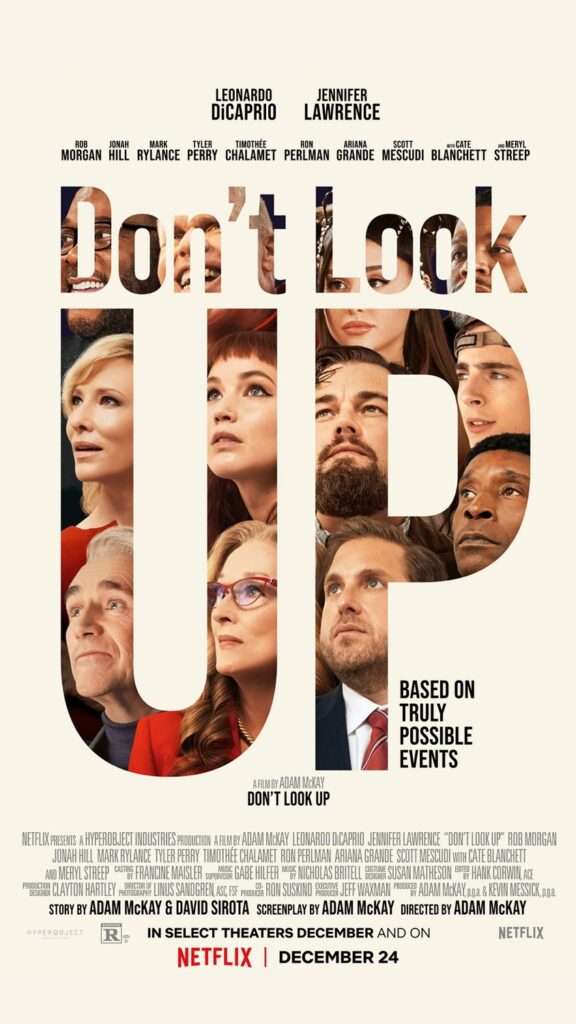A new report takes a deep dive into climate change representation in films dating back to 2013. While it’s still rare, films that include climate themes generally perform better for the major studios and streamers. Could it lead to more climate action?
A recent study by Good Energy, in collaboration with Colby College’s Buck Lab for Climate and Environment, reveals a stark underrepresentation of climate change in the top 250 popular films over the last decade. The report titled “Climate Reality On-Screen: The Climate Crisis in Popular Films” uses the Climate Reality Check, a tool developed by Matthew Schneider-Mayerson, PhD, and the Good Energy team, to analyze films from 2013 to 2022 for their portrayal of climate change.
The findings show that only 9.6 percent of the films over the decade pass the Climate Reality Check, indicating that climate change is either acknowledged or depicted by characters in these films. Despite this low figure, there is a noticeable increase in films addressing climate change in the latter half of the decade, with 17.6 percent of films from 2018 to 2022 incorporating climate themes, compared to just 8 percent in the earlier half.
Climate-themed films
The films include blockbusters like 2013’s “Pacific Rim,” 2015’s “The Amazing Spider-Man 2 Maze Runner: The Scorch Trials,” 2021’s “Don’t Look Up,” and 2022’s “Glass Onion” and “Jurassic World Dominion.” Streamers were the big winner with 25 percent of films including climate change — about double the rate of the Big Five studios, which averaged 12.7 percent. Warner Bros. led the Big Five with 23.3 percent of its films including climate change. Paramount was at the bottom with 4.8 percent.

The report highlights a disparity in character demographics, noting that characters aware of climate change were predominantly male (69.5 percent), white (65 percent), and middle-aged (77.2 percent), which does not reflect the diversity of those most affected by climate issues.
Despite the lack of representation, the report notes that films with climate change elements generally perform better at the box office. Movies that acknowledged climate change in any form averaged an 8 percent higher box office return. Furthermore, films with characters aware of climate change saw a 10 percent increase in box office performance compared to those without.
Schneider-Mayerson emphasized the critical role of storytelling in shaping public perception and action on climate change: “At this crucial moment in which the future of everything we love is at stake, storytelling can be a climate solution. But it can also obscure the reality of the situation we’re in. There’s a desperate need for studios, filmmakers, and writers to provide narratives that speak to our climate reality.”
Climate Reality Check
According to Anna Jane Joyner, founder and CEO of Good Energy, we turn to stories to find meaning, joy, beauty, and courage, “and we desperately need to see our world reflected in the movies that we watch and love.” She says that for all of us, that world now includes the climate crisis. “Like the legendary Bechdel Test before it, the Climate Reality Check is designed to serve as both a creative tool and an invitation to investigate the presence of climate representation on-screen. And as we’ve long suspected: it’s good business — films that passed the Climate Reality Check were 10 percent more profitable,” she said. Good Energy’s goal is to see 50 percent of contemporary films pass the Climate Reality Check by 2027.
The report underscores the gradual shift in cinematic narratives from depicting climate change as a global catastrophe needing superhero intervention to more relatable, everyday scenarios that engage with climate issues.
The report comes on the heels of an effort between Reality of Change and Rare aimed at bringing climate conversations to unscripted TV. “Climate change is reality, and to shine a light on this global issue, we believe there is no entertainment sector better suited to showing climate solutions on screen than unscripted television,” Reality of Change founder Cyle Zezo said of the effort. “We want to answer the call of both the creative community and the audiences we serve who are looking for action to be taken, who want to become more engaged and are demanding more from their entertainment.”
Climate change in gaming
it also comes as a new climate effort comes to gaming. Cinereach and Anima Interactive have launched a climate-themed contest, “Just Play: A Game Jam for Climate Futures,” aimed at game developers to create video games that envision varied climate futures. This competition, fueled by Dreamspace, encourages participants to use game narratives, aesthetics, and gameplay to challenge conventional views and inspire new ideas about climate change. The event builds on the success of their previous game jam, which saw 100 participants from 19 countries submit 43 games focused on justice themes.

“Just Play provides an opportunity to learn from our partners and the gaming community which is an important part of Cinereach’s new adventure operating as a story incubator,” Jennifer Strachan, CEO of Cinereach, said in a statement. “We’re building on decades of work supporting the film community, adding in research-backed climate narrative strategies, so we can better support the next generation of storytelling that sparks curiosity, empathy, and agency.”
Scheduled to run from April 29, 2024, through May 17, 2024, “Just Play: A Game Jam for Climate Futures” offers a grand prize of $10,000. Entrants are tasked with developing video game prototypes that integrate climate themes into their story worlds. The winning entries will be showcased at the Hollywood Climate Summit’s closing night party on June 28, highlighting the intersection of gaming and Hollywood in driving narrative innovation.
“At Anima Interactive, we are deeply inspired by narrative and culture change movements driven by film and TV,” said Karla Reyes, Founder and Creative Director at Anima Interactive. “We believe there’s immense untapped potential to apply storytelling techniques from Hollywood to video games and drive real-world change, especially since games give audiences agency and test behavior. Entertainment moves culture, and culture moves society. This jam explores that theory in action.”
Related on Ethos:


